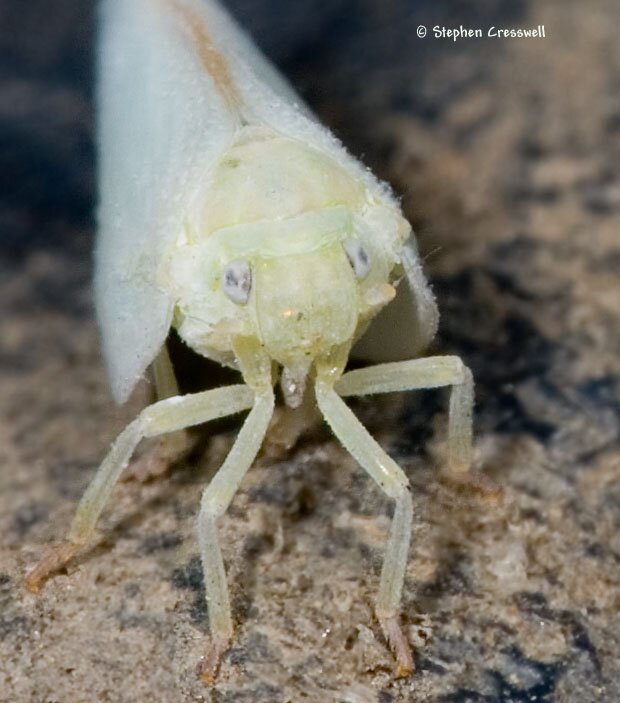
Family: Flatidae
Subfamily: Flatinae
Length: typically 5.5-9.0 mm
In eastern North America, only Anormenis chloris has the double row of apical wing cells, visible in the field as the insect is at rest (visible if you are very close, that is!). The photo at the top of this page shows this characteristic.

S.W. Wilson and McPherson (1981) did a field study of this species in southern Illinois. He found that Anormenis chloris is univoltine, and spends the winter in the egg stage. Wilson found more than 40 food plants utilized by the species, but noted that oviposition was most common in Black Walnut and Pawpaw, always in the new-growth twigs. Hatching occurred beginning in early May, and by late June adults were present. Adults persisted until late September.
Wilson and McPherson (1981) also studied Anormenis chloris in the laboratory, where he reared the species on green beans. Of 382 eggs laid in 16 beans, only 9 hatched. Wilson also brought field-collected Black Walnut and Pawpaw twigs into the laboratory, and of the 491 eggs in those twigs, 30% hatched.
Wilson and McPherson reported that the first instar period lasted averaged 11.6 days, while the remaining instars averaged 8.0, 8.2, 10.3, and 15.0 days each. From oviposition to eclosion took an average of 178 days. Stephen Wilsons drawings of nymphs of Anormenis chloris, all five instars, are on this site, used by permission.
This insect has been the subject of considerable confusion in its nomenclature. For many years authors referred to Ormenis septentrionalis or Anormenis septentrionalis, but the identity of the species that was associated with that name was confused by more than a century of errors in the literature. The accepted name for the species shown here is now Anormenis chloris (OBrien, 1985).

Insects of West Virginia